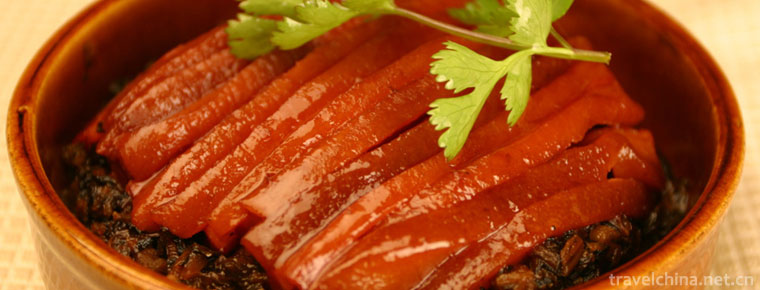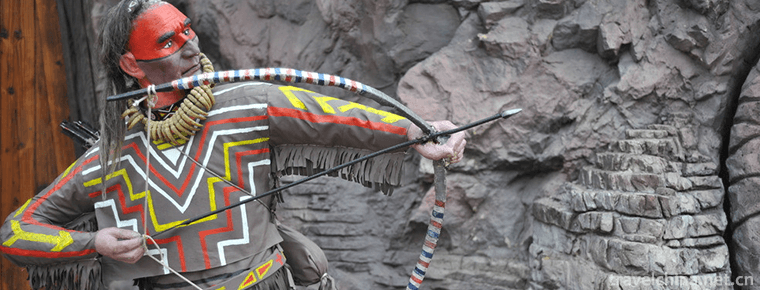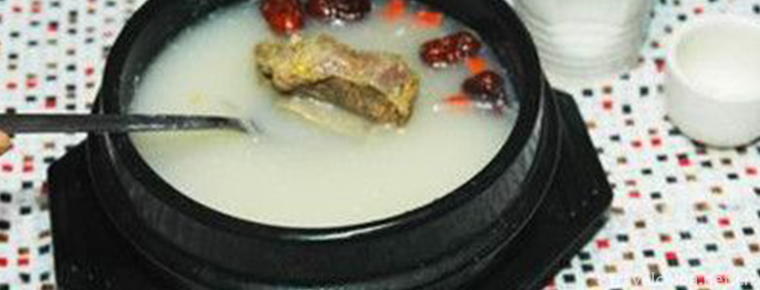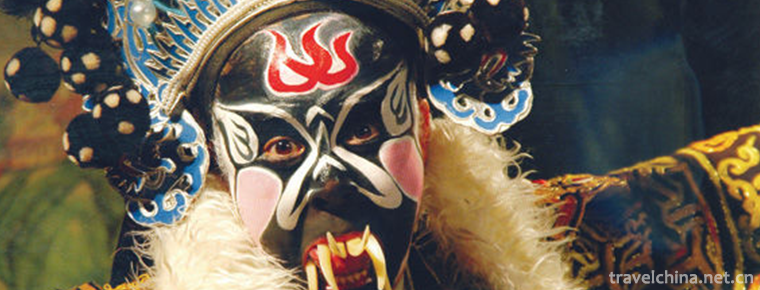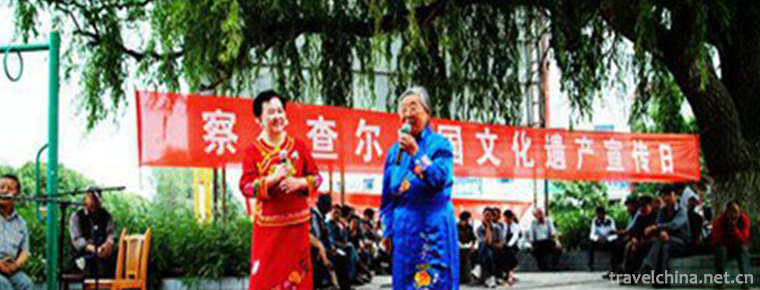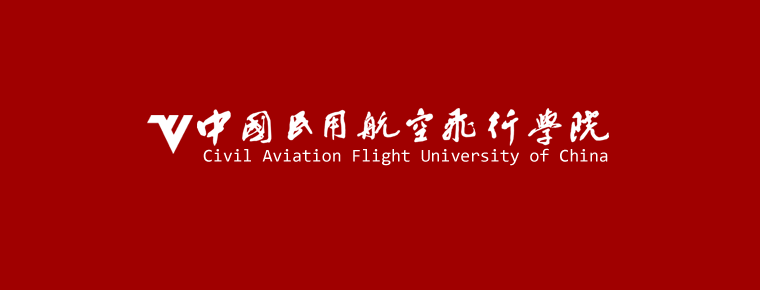Four strands
Four strands
Four-strand string, also known as four-strand string, two-strand string, five-tune string and five-tune tune tune tune, is one of the ancient traditional local operas in China. It originates from Julu County in Xingtai District of Hebei Province and flows to Xingtai Julu County, Handan Wei County, Henan Anyang and other areas.
On June 7, 2008, the four strands were listed in the second batch of national intangible cultural heritage list with the approval of the State Council.
Julu four-strand string and Weixian four-strand string and Anyang four-strand string are listed in the second batch of national intangible cultural heritage list, and Linzhou four-strand string is provincial intangible cultural heritage.
Four strands of deer
List Introduction
Four strands, also known as four strings, two clamps, five tunes and five tunes, are one of the ancient traditional local operas. They originate in Julu County, Xingtai District, Hebei Province, and flow in Xingtai Julu County, Handan Wei County, Henan Anyang and other areas.
Four strings, also known as four strings, two chords, five tunes, Wuqiang strings and five tunes, are one of the rare local operas in Hebei Province. In the early nineteenth century, Linqing was introduced to Xingtai from Shandong Province. On the basis of folk slang, it constantly drew on its strengths and weaknesses, absorbed the nutrition of random bullets, Beijing Opera, Hebei Bangzi and other operas, and gradually evolved into today's four strands.
The four-strand string has a history of nearly 200 years since its birth. During the period from 1920 to the War of Resistance Against Japan, the four-strand string has made a breakthrough development. After the July 7th Incident in 1937, it fell into a low ebb and revived again after 1949.
In terms of content, the four strands were mostly small plays reflecting folk family life at first, and then gradually changed to perform historical traditional plays and serial dramas. Its singing is long, fluent, euphemistic, and its language is implicit, humorous and popular. The lyrics are mostly seven characters. The traditional accompaniment instruments are four stringed piano and hu. Other civil and military instruments are the same as Hebei Bangzi instruments.
There are more than 200 repertoires of four strands, among which Guo Su'e, Yin Xiuzhen, Dong Xiaoling, Wang Haitang, Ma Fengyun, Zhang Chunshan and Ma Fengxian are the most influential actors in the flourishing and revival periods, especially Ma Fengxian. The representative plays include Liu Jinding's Xia Nan Tang Dynasty, He Hou Yan Dian, Er Jin Palace, Sitting in a Building and Killing Cherish, etc.
Performing Form
Four strands are sung in local language, represented by Julu dialect and expressed by five tone values. They have strong local characteristics, such as voicing, ups and downs, high-spirited and vigorous, full of Yan and Zhao's masculinity. Its main repertoires are Loyalty to the Country, Driving by Luan, Tie the Doll, Heaven-bestowed Luk, He Hou Dao Dian, Chop Yao Qi, Er Jin Palace and so on. The music of the four strands is mainly composed of a board cavity and a small number of music cards. It consists of three parts: singing, accompaniment and music cards. Among the four-strand singing tunes, the palace mode occupies the dominant position, while the levy mode occupies a relatively minor position. The two modes of Gong and Zheng are used independently in most cases, but there are also two modes used simultaneously in some parts of the aria. One is the connection of Gong and Zheng modes. The other is the alternation of Zheng and Gong modes in zheng-tong aria.
Musical Composition
Four-strand accompaniment is an important part of four-strand music. According to its function and function, it can be divided into two parts: literary accompaniment and martial accompaniment. The accompaniment of literary music is mainly used to accompany singing and to play cards with performing actions. The accompaniment of martial music is used for the beginning and ending of singing, as well as for the appearance, ending, pronunciation, figure and martial arts.
Classification of Qupai
Qupai is a pure instrumental part of four-strand music. According to the different main instruments used in their performance, they are divided into two categories: chord flute and suona music. String flute is mainly used for passing and action accompaniment, and Suona music is mainly used for marching operations of military generals. Most of the instrumental music cards used in the four strands are multi-purpose. They can be used in different situations according to needs, such as , , , , , [four or six sentences], and some of them are dedicated to special songs. Four-strand strings play with four-hu as the main instrument. Four-strand strings are completely different from other operas in the accompaniment process. The way is not to preserve the tune, but in the whole accompaniment process, four-hu, banhu, erhu, Sheng and flute are different ways, forming a very unique natural polyphony accompaniment.
The performance of four-strand string opera has four lines of life, dan, Jing and ugliness, but there is no fundamental difference in singing. There are only differences between male and female tunes. The difference between male and female tunes is first shown in the common range of voice. Male tunes are slightly lower and female tunes are slightly higher. In actual singing, all kinds of roles of Sheng, Jing and Ugly are male and female. The main singing method is true voice, supplemented by fake voice or mixed voice.
Inheritance Significance
Four strands are highly inclusive, inclusive, with the strengths of each family, without losing its personality, and are valuable cultural heritage.
development history
Four-strand opera has a history of nearly 200 years from its birth to today. During the period from 1920 to the War of Resistance Against Japan, four-strand opera has made a breakthrough development. After the July 7th Incident in 1937, it fell into a low ebb and revived again after 1949.
In terms of content, the four-strand string plays were mostly small plays reflecting folk family life at first, and then gradually turned into traditional historical plays and serial dramas. Its singing is long, fluent, euphemistic, and its language is implicit, humorous and popular. The lyrics are mostly seven characters. The traditional accompaniment instruments are four stringed piano and hu. Other civil and military instruments are the same as Hebei Bangzi instruments.
There are more than 200 repertoires of four strands, among which Guo Su'e, Yin Xiuzhen, Dong Xiaoling, Wang Haitang, Ma Fengyun, Zhang Chunshan and Ma Fengxian are the most influential actors in the flourishing and revival periods, especially Ma Fengxian.
Four-strand string opera has had a great sensation in Xingtai and Shanxi, and its footprint is all over Beijing, Tianjin, Shandong, Henan, Shaanxi and Shanxi. The representative plays are Liu Jinding's Xia Nan Tang Dynasty, He Hou Yan Dian, Er Jin Palace and Sitting Up and Killing Cherish. Xingtai Four-strand String Theatre Troupe is a professional group performing the play. There are more than 40 actors and more than 30 plays.
Weixian Four-strand String
The four-strand string in Weixian County originated from Heze (Caozhou) of Shandong Province. It was first developed from the folk flower drum and lilac. About the spring of 1867, a begging artist from Shandong Province, named Li Chengtai, passed by Daming and begged in Weixian County. Because he could pull four strings, he combined with blind winter records and Chen Yu of Weixian artists and absorbed local minors. In Tongzhi Nine Years of the Qing Dynasty (1871), he founded the first four-strand children's class in Hebei Province in Beipotou Village of Weixian County. The opera belongs to the Banqiang system and has both the Qupai style and the singing style is beautiful, popular, plain and humorous. Plate type: slow board, second board, third board, running water, reverse board, black and red board, etc. Wenchang mainly uses four-stringed hu, erhu, jinghu, bamboo flute, Sheng and so on. With the performance of Hebei Bangzi and Peking Opera on the same stage, the number of Python Opera (Dynasty Opera) is increasing day by day. Some performing arts, such as singing, board style, music, facial makeup, clothing, directives, repertoires, etc., are gradually penetrating into this kind of play. A large number of foreign nutrition has made it develop and improve greatly in its performance style and singing skills. Sheng, Dan, Jing, Du and Ugly Behavior are becoming more and more perfect.
Beipotou Village is a local opera with strong local flavor and broad mass base. The performance is vivid, lively and rough. Daobai uses Beijing Bai, sings in a real voice, speaks in a fake voice, and is good at shaping the unique artistic style of simple and high-spirited heroes.
Beipotou Village has three original four-strand theatre troupes, more than 200 professional four-strand actors, more than 100 directly engaged in theatre personnel, in the boom period, the village of men and women, young and old, almost everyone can sing opera, all Dong opera, people in peacetime jokes, red and white funny stories are all four-strand theatre words, Lincun opera said: "Beipotou Village even cock crow is four-strand tune."
Anyang Four Strings
It originated in the north of Henan Province, the south of Hebei Province and the middle and east of Shandong Province. Four strands, also known as five tunes, absorb the nutrition of two chords, falling cavity, silk string, doll cavity and Hebei Bangzi operas, and gradually evolve into the present four strands.
Four-strand singing is good at creating simple and high-minded heroes with true voice, false voice, stretching and unrestrained. There is an old saying in northern Henan that "if you don't hoe or water the garden, you should also see the four strands".
In the early liberation period of Anyang, the cultural level of the performers of the Four-strand Drama Troupe was relatively low. The students relied on their masters to teach their plays by heart, mainly by heart, while the shallow scripts were dictated by mouth. Popular Taoism, easy to understand and repeat the melody, seriously restricting the development of drama.
In 1976, our city restored the four-strand opera troupe. The leadership of the Cultural Bureau transferred me to the troupe, and successively served as music singing design, stage art director and band leader. In order to reverse the passive situation and open up the traditional costume opera, some of the key business members of the troupe and I went to Beijing to study the Chinese Peking Opera Troupe's "Forcing Liangshan", copy the script overnight, transplant and design the aria, teach singing, chorus, orchestra, rehearsal overnight, and perform in Anyang Grand Theater, which was a great success. The play was performed in Anyang Grand Theater for one month, three times a day, and the venues were full, which aroused strong repercussions in our city. Then transplanted the opera "Tornado" and performed four times a day in Hongguang Theatre and Hebi Zhongshan Theatre. At the peak of the four-strand string period, the excellent programs with higher ticket price value included "The Legend of White Snake", "Chasing Fish", "Hujia General" and "Shaoguogong". In 1984, the modern theatre performance, written by Cheng Guanglin and directed by his ancestors, won the first prize of professional theatre performance in our city for Yang Cheng's design of Musical Singing tune "Bitter Plum in Spring".
Since 1988, people's interest in traditional operas has become more and more indifferent to the impact of film and television art and economic tide. Some accomplished old artists have gradually withdrawn from the stage because of their advanced age, and some have died one after another. Young artists are unique in their skills and enjoy little prestige in the theatre troupe. These reasons make the development of the four strands difficult, and the situation facing crisis is difficult to change. Due to the decline of the troupe, it was merged into the Henan Opera Troupe. At present, there are only private grass-roots theatres in our city. They are silently dedicating their youth to the development and promotion of the four strings.
In 2010, in order to save the four strings of the rare operas of intangible cultural heritage, Anyang Song, a mixed chorus, was created in our city. In that year, Lagerstroemia Art Troupe went to Beijing to participate in the 10th International Chorus Festival of China. On the stage of Beijing International Chorus Competition, the two male voices won thunderous applause from experts, national chorus teams and all the audience. The competition won the first prize for excellence and participated in the exhibition at the PLA Hall in Beijing. Anyang's four strings have finally reached the international stage and won the unanimous praise of experts.

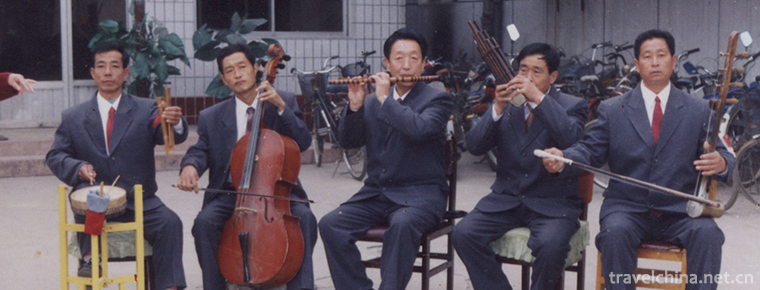
-
Ruoergai CountyZoige County
Zoige County is located in the northeastern edge of the Qinghai-Tibet Plateau.
Views: 160 Time 2018-10-12 -
Guilin Happy Land Theme Park
Guilin Lemandi theme park Gudong Waterfall is suitable for sightseeing all the year round. April-October is the best time for Guilin tourism. The scenic spot is located in Guilin.
Views: 154 Time 2018-12-12 -
Kaiping Garden
Kaiping Liyuan is located in Bohua Village, Tangkou Town, Kaiping City, Guangdong Province. It is a private garden of Xie Weili, an overseas Chinese traveling to the United States in Tangkou Town.
Views: 130 Time 2019-01-29 -
Eight Diagrams porridge
Bagua porridge is derived from "Chinese recipe for longevity". Its main ingredients are turtle and japonica rice. It is made by boiling with other auxiliary ingredients. It can play a health.
Views: 138 Time 2019-03-27 -
Ninghai Pingtao
Ninghai Pingdao originated in the late Ming and early Qing Dynasty and was popular near Ningbo. It has a history of three or four hundred years. Ninghai Ping Tune belongs to the branch of Xinchang Tun.
Views: 124 Time 2019-06-08 -
Xibo Folk Songs
Xibo folk song is an important kind of traditional music culture of Xibo nationality, which is widely spread among the Xibo people in Chabchal Xibo Autonomous County and Xinjiang. Folk songs are an im.
Views: 133 Time 2019-07-01 -
Line lion
Line lion is a local traditional lion dance in Ningde City, Fujian Province. Shiqiaotou village's line lion nine lions map originated from the celebration of the Lantern Festival on the 15th day of th.
Views: 199 Time 2019-07-03 -
Civil Aviation Flight University Of China
The school is directly under the Civil Aviation Administration of China. Its predecessor was established in May 1956 with the approval of Premier Zhou Enlai. Chairman Mao Zedong appointed the aviation.
Views: 175 Time 2019-08-31 -
Four famous Chinese embroidery
Suzhou embroidery is famous for its fine stitches, elegant colors and fine embroidery. It has the characteristics of flat, light, even, harmonious, fine and dense. The theme is mainly about small animals. Such as "cat play", "wind through flowers",.
Views: 316 Time 2020-12-12 -
Panzhihua from the Ming Dynasty to the Republic of China
In 1382, in the 15th year of Hongwu reign of the Ming Dynasty, the Xuanwei Department of paloros put Yunnan under the jurisdiction of Sichuan Chengxuan political envoys. In this place, there is another commander's Department of Sichuan Xingdu, which leads the lawsuits.
Views: 88 Time 2020-12-14 -
Nanchong scenic spot
The national 5A tourist attraction is located in Ma'an Town, Yilong County, with a total planning area of 52.5 square kilometers. The core scenic area with the former residence of Zhu De, the birthplace of Zhu De and the memorial hall of former residence of Comrade .
Views: 317 Time 2020-12-17
